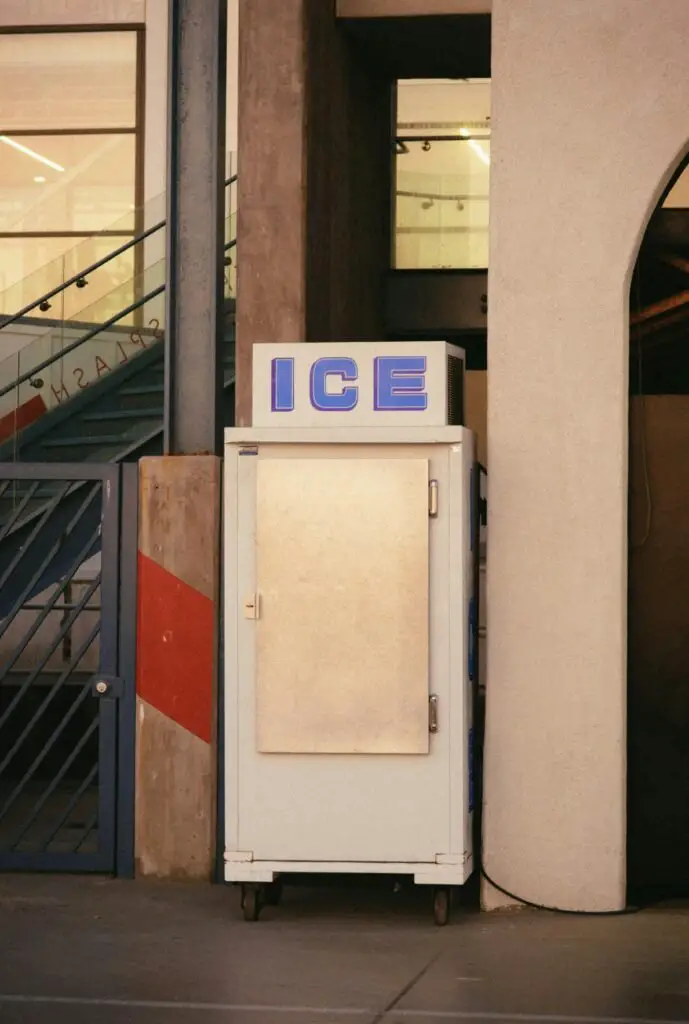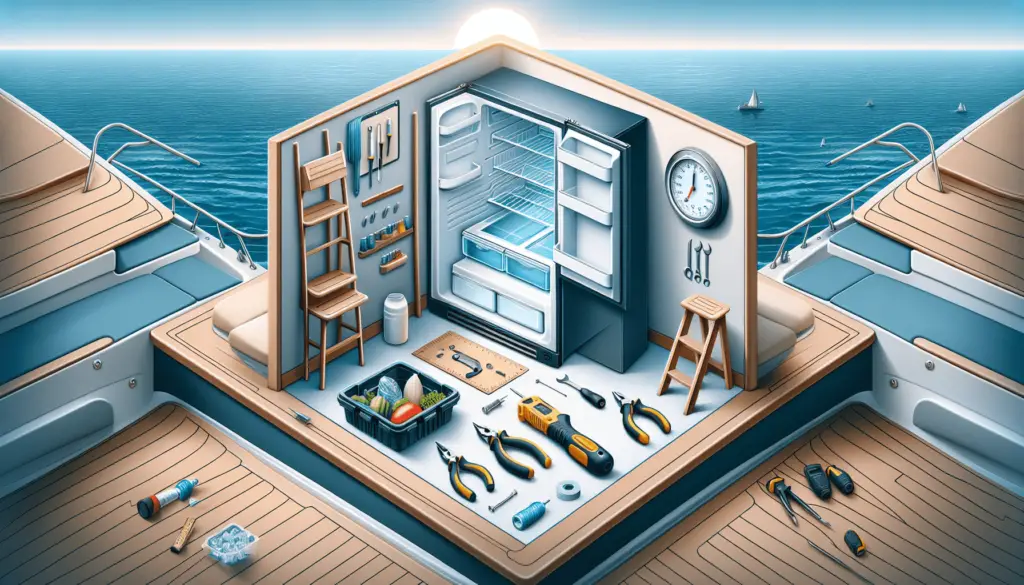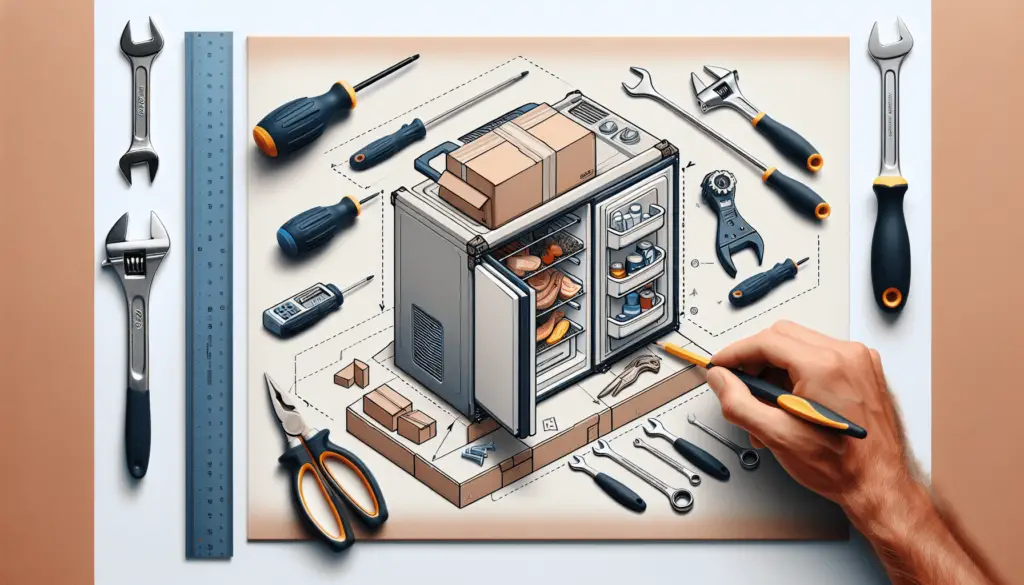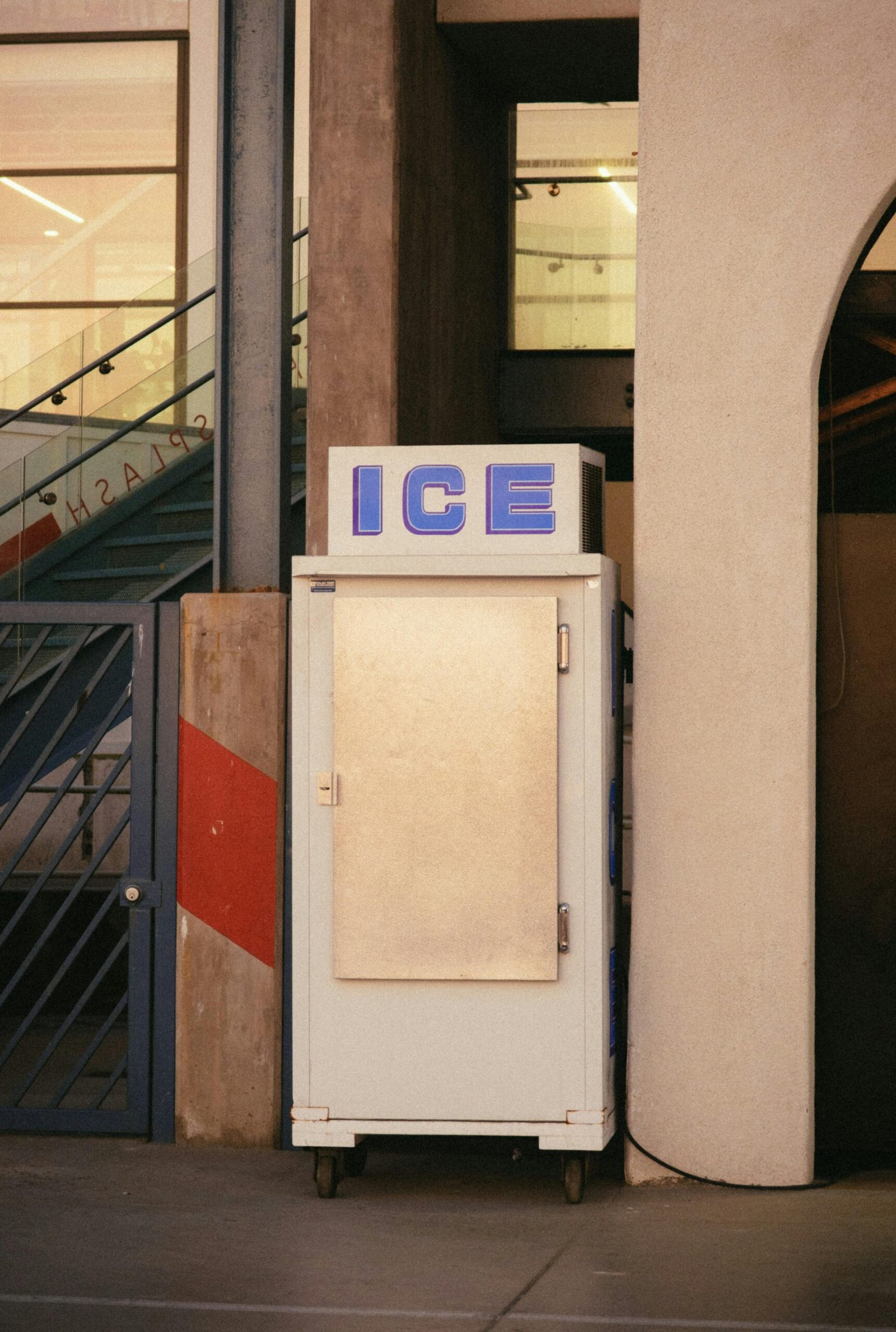Imagine sailing on the open water, feeling the warm breeze against your skin and enjoying the breathtaking views. As you soak in the serenity, you realize that something is missing – a marine refrigerator on your boat. This essential appliance can greatly enhance your boating experience, allowing you to keep your food and beverages fresh and cool, even on long journeys. In this article, we will guide you through the step-by-step process of installing a marine refrigerator on your boat, so you can have the convenience and comfort of a cold drink while cruising the waves.

Plan Your Installation
Installing a marine refrigerator on your boat requires careful planning to ensure a smooth and successful installation process. The first step in planning your installation is to determine the type of refrigerator that best suits your needs. There are different types of marine refrigerators available, including traditional built-in refrigerators, portable refrigerators, and drawer-style refrigerators. Consider factors such as the available space on your boat, your power requirements, and your budget when selecting the right refrigerator for your needs.
Once you have determined the type of refrigerator you need, the next step is to measure the available space on your boat. It is essential to have accurate measurements to ensure a proper fit for your refrigerator. Measure the height, width, and depth of the space where you plan to install the refrigerator. Take into account any obstructions or obstacles that may affect the installation process.
In addition to measuring the available space, it is crucial to consider the power requirements for your marine refrigerator. Some refrigerators may require an electrical power source, while others may run on battery power. Determine the power source available on your boat and choose a refrigerator that is compatible with your power system.
Gather the Necessary Tools and Materials
Before you begin the installation process, it is essential to gather all the necessary tools and materials. Having everything on hand will make the installation process more efficient and hassle-free. Here are the tools and materials you will need:
- Marine Refrigerator Kit: This includes the refrigerator and any necessary installation components specifically designed for marine use.
- Measuring Tape: To accurately measure the available space and ensure a proper fit.
- Screwdriver: To tighten screws and bolts during the installation process.
- Wrench: To secure mounting brackets and other components.
- Drill: To create pilot holes for the mounting brackets.
- Silicone Sealant: To create a waterproof seal around the refrigerator.
- Electrical Wiring: If required for your refrigerator model, ensure you have the necessary wiring for the power connection.
- Fuses: To protect the electrical system from overload.
- Mounting Brackets: To securely attach the refrigerator to the designated space.
Having these tools and materials ready before you start the installation will save you time and effort and make the process more straightforward.
Prepare the Space
Before installing the marine refrigerator, it is crucial to properly prepare the space where it will be placed. Follow these steps to ensure a clean and suitable installation area:
Clear the Area: Remove any objects or debris from the area where the refrigerator will be installed. Ensure there is enough space for the refrigerator to fit without any obstructions.
Inspect for Obstructions: Check for any protruding wires, pipes, or other obstacles that may interfere with the installation process. These obstructions may need to be moved or modified to accommodate the refrigerator.
Clean the Surface: Thoroughly clean the surface where the refrigerator will be installed. Remove any dirt, dust, or grease to ensure a secure bond when applying the silicone sealant.
Apply Protective Coating: Consider applying a protective coating to the surface to prevent any moisture damage to the boat’s structure. This step will provide an extra layer of protection and ensure the longevity of your marine refrigerator installation.
Install the Mounting Brackets
Installing the mounting brackets is a crucial step in securing the marine refrigerator in place. Follow these steps to correctly install the mounting brackets:
Locate the Mounting Points: Using the measurements taken earlier, mark the positions of the mounting points on the boat’s surface. Ensure these points align with the pre-drilled holes on the refrigerator or the mounting brackets.
Mark the Positions: Mark the positions of the mounting points using a pencil or a marker. Double-check the accuracy of these markings to ensure the refrigerator is properly aligned.
Drill Pilot Holes: Use a drill to create pilot holes on the marked positions. These pilot holes will guide the screws during the installation process, preventing any damage to the boat’s surface.
Attach the Brackets: Align the mounting brackets with the pilot holes and attach them using the screws provided. Ensure the brackets are tightly secured to provide a stable foundation for the refrigerator.

Position the Refrigerator
Now that the mounting brackets are installed, it is time to position the marine refrigerator in its designated space. Follow these steps to correctly position the refrigerator:
Slide the Refrigerator into Place: Carefully slide the refrigerator into the space where it will be installed. Take your time to ensure the refrigerator fits snugly into position.
Ensure Proper Clearance: Check that there is enough clearance around the refrigerator for proper ventilation and access. Avoid placing the refrigerator too close to walls or other objects that may obstruct its performance.
Check for Levelness: Use a level to ensure the refrigerator is perfectly level. An unlevel refrigerator may not function properly, and doors may not close correctly. Adjust the position of the refrigerator if needed until it is level in all directions.
Connect the Power Supply
Next, it is time to connect the power supply to your marine refrigerator. Follow these steps to correctly connect the power supply:
Route the Wiring: If your refrigerator requires an electrical power source, carefully route the wiring from the power source to the refrigerator. Ensure the wiring is properly secured and protected to prevent any damage from movement or exposure to moisture.
Connect the Positive and Negative Wires: Connect the positive and negative wires from the power source to the corresponding terminals on the refrigerator. Follow the manufacturer’s instructions for proper wiring connections.
Install Fuses: If necessary, install the appropriate fuses in the electrical circuit to protect the refrigerator and electrical system from overload. Consult the refrigerator’s manual or a professional electrician for guidance on proper fuse installation.

Secure the Refrigerator
To ensure the stability and safety of your marine refrigerator, it is crucial to secure it properly. Follow these steps to securely fasten the refrigerator:
Use Mounting Hardware: Utilize the mounting hardware provided with the refrigerator or additional hardware if necessary. Secure the refrigerator to the mounting brackets using screws and bolts, ensuring a tight fit.
Tighten Screws and Bolts: Double-check all screws and bolts to ensure they are tightened securely. Loose or improperly fastened hardware may lead to instability or damage to the refrigerator.
Test the Refrigerator
After the installation process is complete, it is essential to test the marine refrigerator to ensure proper functionality. Follow these steps to test the refrigerator:
Plug in the Refrigerator: Connect the refrigerator to the power source and plug it in. Ensure the power supply is stable and free from any faults or issues.
Check for Power and Functionality: Turn on the refrigerator and check for power. Verify that the display or control panel is functioning correctly and that the refrigerator is cooling as expected. If any issues arise, consult the manufacturer’s instructions or seek professional assistance.

Seal the Surrounding Area
To protect both the refrigerator and the boat’s structure, it is crucial to seal the surrounding area. Follow these steps to properly seal the refrigerator installation:
Apply Silicone Sealant: Using a silicone sealant specifically designed for marine use, apply a bead of sealant around the edges of the refrigerator where it meets the boat’s surface. This sealant will create a waterproof barrier and prevent moisture from seeping into the boat.
Ensure a Waterproof Seal: Carefully smooth out the sealant with a putty knife or a similar tool to ensure an even and watertight seal. Pay close attention to any gaps or areas that may be prone to water intrusion.
Safety Considerations
When installing a marine refrigerator on your boat, it is essential to prioritize safety. Follow these important safety considerations:
Follow Manufacturer’s Instructions: Always refer to the manufacturer’s installation instructions for your specific refrigerator model. Adhering to these instructions will ensure a proper and safe installation.
Check for Gas Leaks: If your refrigerator runs on gas, regularly check for gas leaks and ensure the gas system is properly maintained. Gas leaks can be hazardous and must be addressed immediately to prevent accidents.
Properly Dispose of Old Refrigerator: If you are replacing an old refrigerator, ensure proper disposal of the old unit. Follow local regulations and guidelines for disposal to protect the environment and prevent any potential hazards.
Installing a marine refrigerator on your boat can greatly enhance your sailing experiences and provide the convenience of fresh food and beverages on board. By carefully planning your installation, gathering the necessary tools and materials, and following safety guidelines, you can successfully install a marine refrigerator and enjoy its benefits during your boating adventures.


